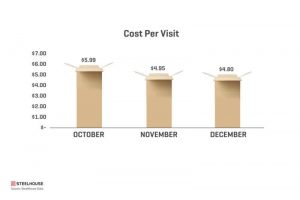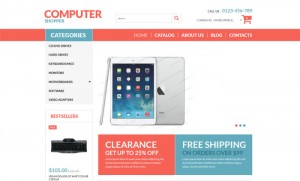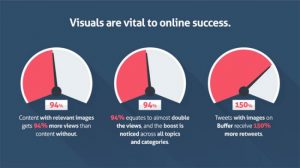August 25, 2016
You open Instagram and you can practically taste the photos.
Fresh, flaky apple pie. Rich, gooey caramel infused brownies. Iced cold lemonade dripping with condensation.
Food brands are crushing it on the channel with their crisp photos and high engagement.
With more than 183 million photos tagged under the hashtag #food alone, Instagram’s foodie community is tuned in and hungry for content. Some even say Instagrammers are changing the food scene.
This past holiday season, consumer packaged goods (CPG) brands saw a $ 3.91 average cost-per-engagement on Instagram advertising.
But surprisingly, only 16% of CPG brands have an Instagram account.
If you’re looking for some inspiration to get started, here’s how:
1) Find Your Formula
The common misconception is that a beautifully curated Instagram feed takes a lot of daily maintenance. And that sharp, eye-catching photos require professional photography equipment. None of these are true.
At the foundation of every popular food account is a well-crafted formula.
Chobani is a great example of this. They fill their feed with bright colors that feel warm and welcoming.
Before you post a photo, take a look at the photo to the right and directly below it to get a sense of how the colors will play together. See how the crisp reds and greens tie all of these photos together?

Chobani also strategically mixes up style and content to make the feed look more dynamic. The small snapshot of their feed below includes a mix of recipes, a #NoBadStuffLid giveaway, and action shots cheering on athletes in the Rio Olympics.
2) Think Outside The Kitchen
The secret to driving engagement, is to sometimes not post food photos at all. Some of the most-followed food brands mix it up by posting lifestyle shots.
Red Bull, at 5.4 million followers, is known for their adrenaline-driven photos of cliff diving, kite surfing, dirt biking, and more. The energy drink brand goes past just selling their product. They’re selling a fun, adventurous lifestyle.
For brands who want to follow in Red Bull’s footsteps but might not have the resources to take photos in the field every day, user-generated content is the way to go. User-generated content allows you to show your product from a different angle, put a face to your brand, and produce more content with limited resources. It also builds trust and loyalty.
Research shows that 93% of consumers find user-generated content helpful and 85% trust content generated by others more than they trust the content produced by brands.
Ben and Jerry’s has built up their following of 658,000 followers by posting user-generated content more than half of the time.
3) Post On Time
TrackMaven recently ran a study that showed the golden time for food and beverage companies to post on Instagram is between 9 AM and 10 AM EST, followed by 12 AM to 1 AM EST and 10 PM to 11 PM EST. The study also showed that the best day to post is Thursday.
Photo from TrackMaven
Users are most engaged either right as they’re getting into work or as their winding down for the night. Use this data to your advantage and test out breakfast shots in the morning or decadent dessert photos late in the evening.
4) Recruit Influencers
CPG brands see the highest engagement from influencer marketing. Research shows that the average ROI for influencer marketing is $ 6.85 for every dollar spent. In the CPG industry, the ROI is even higher, where returns are $ 11.33 for the foods category and $ 10.48 for retailers.
As a micro-influencer with a little over 3,500 followers, I’ve worked with a few local brands to promote their products.
A few months ago, Natalie’s OJ reached out to me asking if they could ship me a free box of juices in exchange for a post on my feed. They had just begun selling their juices in a few local supermarkets in New York City and could see that my following has responded to clean-eating food photos on my feed before.
The partnership with Natalie’s OJ was seamless, because they did two things:
– Sent over a contract and timeline
Putting together a contract, even a short and simple one, can help define your ask for influencers and hold both parties accountable to complete the project. Sending a timeline along with the contract makes it easy for influencers to plan out their shots and any styling that needs to be done.
– Surprised me with extras
Natalie’s OJ packaged the juice well with dry ice, included a nice handwritten thank you note, and an extra coupon for more juice. Opting for a handwritten note over email can go a long way. It adds a human touch and makes the influencer feel even more special.
More Science Than Art
The most creative Instagram accounts are data-driven and intentional. Everything, from the product featured in the photo, to colors, to posting time, and influencer marketing, is trackable.
And that makes it really easy to curate a feed that your followers are bound to drool over. It’s good to know that the best day to post is Thursday and that pizza is the most Instagrammed food, but test and optimize to find the right formula that works for your brand.
Understanding what resonates most with your unique audience helps build trust, engagement, and a compelling brand aesthetic that’s all your own.
Digital & Social Articles on Business 2 Community(76)





